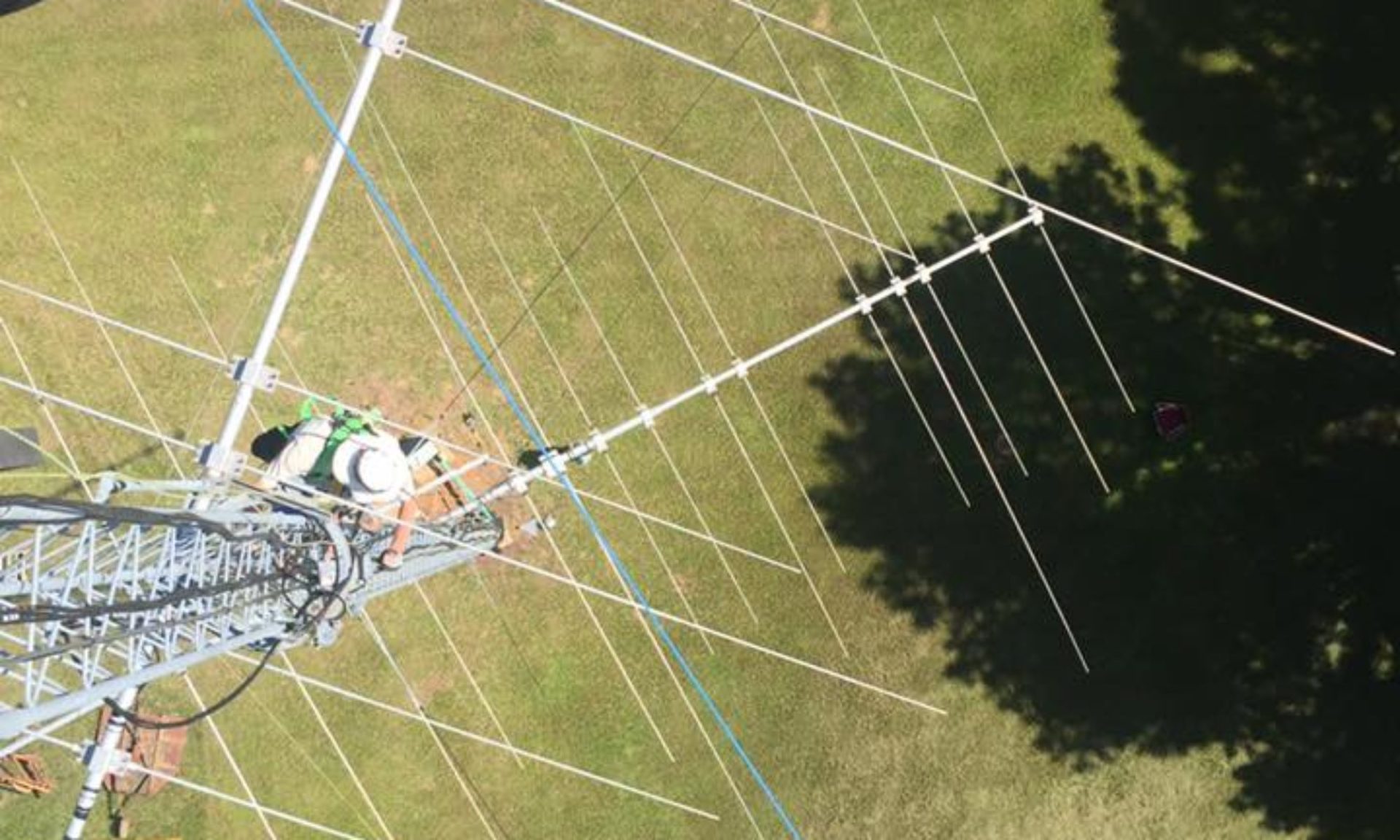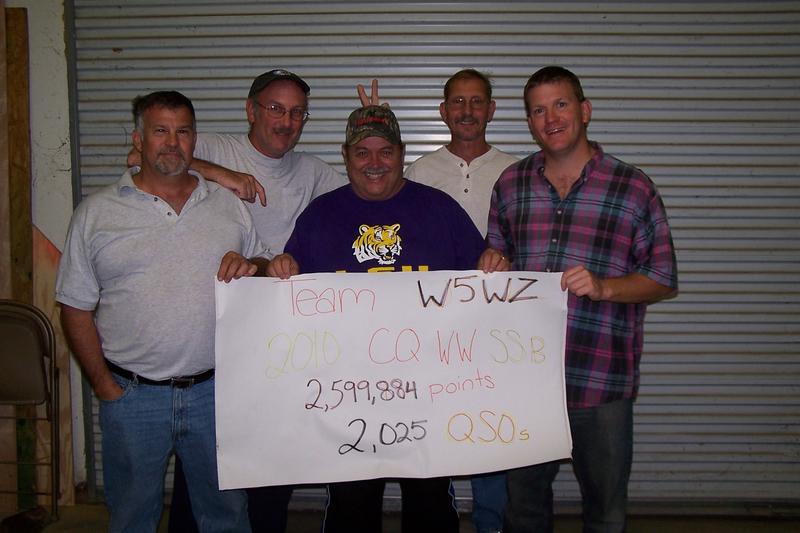10/28 – 10/31/11 — Traveled to K8AZ to join the M/S team for CQ WW SSB.
The 2011 CQ WW SSB is now history! I left from Shreveport LA on Friday morning. Once I got to Cleveland Ohio (aircraft mechanical problems, late flight crew, missed connection in Dallas, rerouted to Chicago, near-miss connection, and lost luggage), I had a great time with a great group of ops (K8AZ, K8BL, K8MR, K8NZ, ND8L, W5WZ, W8CAR, W8WTS, WT8C) at a fantastic station. Tom K8AZ and his golden retriever Shane are first-rate hosts!
Here is the scoop on the K8AZ station:
House Tower:
• 5L 10m @ 80′ (rotates)
• 5L 10 @ 50′ fixed SE (switchable upper-both-lower) • 2L40 @ 70′ (rotates)
Pond Tower
• 6L15 @ 130′ (rotates)
• 6L15 @ 65′ (fixed EU) (switchable upper-both-lower) • 6L20 @ 120′ (rotates) • 6L20 @ 60′ (fixed EU) (switchable upper-both-lower) • 5L10s @ 125’/100’/75’/50′ (all fixed EU) • Tower also supports a full-size elevated ground plane (elevated radials) for 160m
TUP Tower (rotatable tower)
• 5L20 @ 120′
• 5L15 @ 110′
• 7L10 @ 100′
• 7L10 @ 75′
• 5L15 @ 65′
• 5L20 @ 45′
• Tower also supports ropes which support a wire 4-square (full size) for 80m
40m Tower
• 4L40 @ 130′
• 2L40 @ 60′ (switchable w/4L40)
Receive antennas include a short-vertical 4-square and a 15′ high dipole for 160m; a 15′ high dipole for 80m, and the Hi-Z 8-circle rx array
All antennas are available at all four positions; however the TUP rotating tower requires coordinating which band controls the azimuth. The switching scheme is fantastic. Everything is very well engineered. Inter-station interference was minimal – the station employs Dunestar 200watt band pass filters between transceivers and amps, as well as some W3HQN high-power filters after the amps (serial numbers on all were less than 15). There is liberal use of copper grounding strap neatly in the entire basement shack. All cables are neatly and consistently labels. All controls are neatly and clearly labeled.
Inside, the transceivers are three FT-1000MP Mk-Vs and one K3- all fully-loaded with appropriate Inrad filters. All homebrew amps: three 8877 and one 3cx1200. The amps’ power supplies are beefy, with two of them using pole-pig transformers.
There are six identical computers running Win-Test for logging; 2 of them are spares, but are up on the network during the contest with the log being written to all 6. That way, an in-contest failure only requires relocating the computer. Win-test is different from N1MM but still easy enough to get the basic functions down. Tom insists on footswitch PTT (my favorite anyway) and uses Heil Quiet Sets (no longer in production) with HC-4 mike elements.
The M/S strategy was keep the run station running. Anytime the rate got down below 120 or so, we were looking to change the run band for at least the 10 minute clock. The other 3 transceivers were constantly tuning, listening, and scanning the DX cluster spots for new mults. Early in the contest, we would ‘stack’ the band maps with mults to enable keeping the mult station rate up for the 10 minutes, by simply point & shoot. As the hours went by and the mults were harder to find, often the 10-minute clock was open (meaning we could change mult band at any time) and we would change for a single mult. Sometimes the rate would slow, so we’d have one of the other receivers stack a band map, switch to that band to ‘point & shoot’ for 10 minutes, then switch right back to the previous run band.
Sharing time with the other 8 ops, I got 6 hours sleep on Friday night and 5 1/2 on Saturday night.
Observations- when the propagation is there, the Europeans are loud! But I think our openings in the south last longer. Over the pole flutter is there on more paths since the location is further north and the polar region is appears wider.
There were several light-hearted comments about how slow I talk and about my ‘hard-to-understand’ accent. I thought they all talked in FFWD mode 😉
And the best part — I was home on Monday evening to trick or treat with the family! What a weekend!
CQ Worldwide DX Contest, SSB
Call: K8AZ
Operator(s): K8AZ,K8BL,K8MR,K8NZ,ND8L,W5WZ,W8CAR,W8WTS,WT8C
Station: K8AZ
Class: M/S HP
QTH: Ohio
Operating Time (hrs): 48
Summary:
Band QSOs Zones Countries
——————————
160: 33 13 29
80: 196 26 84
40: 497 32 108
20: 557 40 144
15: 1299 38 146
10: 1339 34 145
——————————
Total: 3921 183 656
Total Score = 9,408,546
73,
Scott W5WZ
I made a PowerPoint presentation for our local club meeting held on the night after I returned home.

